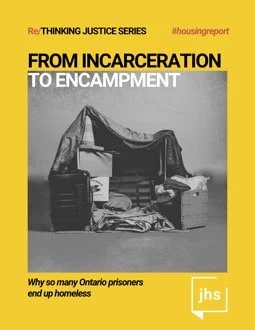By Ava Pittman
Tacoma Housing Authority (THA) envisions a future where everyone has an affordable, safe and nurturing home, where neighborhoods are attractive places to live, work, attend school, shop and play, and where everyone has the support they need to succeed as parents, students, wage earners and neighbors. THA’s mission is to provide high quality, stable and sustainable housing and supportive services to people in need. It does this in ways that help them prosper and help our communities become safe, vibrant, prosperous, attractive, and just1 . To fulfill that vision and that mission, THA attempts to make informed judgments about whether to admit or deny applicants for its housing. It seeks to balance its mission to house people who need the housing while keeping it safe and enjoyable by excluding those who pose an undue risk. Like most other landlords, THA’s screening policies consider an applicant’s criminal history as a sign of risk for this purpose. THA also uses screening policies for admission to its rental assistance programs that help clients pay the rent to private landlords on the private rental market. This paper describes THA’s review of these uses of criminal history. It recommends some changes to THA’s screening policies. These recommendations arise from the review’s answer to the following questions: ● to what extent is an applicant’s criminal history a useful predictor of future tenant behavior; ● is excluding an applicant due to criminal history otherwise excluding a qualified tenant unnecessarily; ● does the use of criminal history as a screening criterion result in an undue and disproportionate exclusion of persons of color; ● the extent to which housing persons with criminal histories make a community, the justice-involved individual, and their families more successful; ● can changes to THA’s screening policies make THA’s housing more accessible to persons with a criminal history without incurring undu To help answer these questions, THA consulted the following sources: ● the research literature; ● THA’s current practices and the results; ● current practices of other public housing authorities, and the results; ● THA residents; ● THA staff; ● THA’s Landlord Advisory Group; ● THA’s liability insurance carrier. THA’s review of its use of criminal history as a screening criterion arose from related discussions in Pierce County. In late 2016, the Center for Social Innovation, a national research and training project addressing racism and homelessness, invited Pierce County to take part in a research study to identify the nexus of race to homelessness in Pierce County. They call the project, Supporting Partnerships for Anti-Racist Communities (SPARC). It included interviews with people who have or are experiencing homelessness in Pierce County. During these interviews, participants voiced that their past criminal history was a barrier to securing housing. Nationally, research tells the same story that: people with conviction histories face discrimination in many facets of life, including housing. In September 2017, the Vera Institute of Justice invited THA to participate with other public housing authorities in a new initiative, Opening Doors to Public Housing. The U.S Department of Justice funded this initiative. The initiative sought to help housing authorities assess how to safely increase access to stable housing for people with conviction histories. The Vera Institute of Justice provided THA with technical assistance, data from national research, and valuable substantive expertise in assessing that data. THA’s Department of Policy, Innovation & Evaluation (PIE) led this review. This paper conveys PIE recommended changes to THA’s screening use of criminal history.
Tacoma, WA: Tacoma Housing Authority, 2020. 76p.




